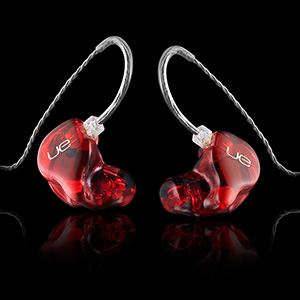Shopping for earbuds is a strange process. Most consumers will pick a pair based on three qualifications:
- Design (whoa, that looks SO cool!)
- Price
- Brand Equity
Though these three are definitely significant deciding factors in the purchasing process, there are many other factors that we must bring into consideration. Most consumers overlook the technical specifications marked on the packaging of earbuds. It would do well for the manufacturers to educate us on the significance of these terms. Knowing what these aspects mean will make you a much more intelligent consumer. Don’t take this knowledge for granted either; most employees at electronics retailers themselves do not know what these details mean. Knowledge is power, and I believe when you supply yourself with the right knowledge, you are on a much better path toward independence in buying, and you will be able to more accurately assess whether a pair will deliver the kind of power you have come to respect and love.
- Frequency: You see this on every package of earbuds. You’ll see numbers like 60hz-25khz, 15hz-20khz. What does all of this mean? Well the sound is measured in hertz. The lower the hertz, the more bass the speaker will deliver; therefore, a speaker that promises you 15hz is going to have much deeper bass than one that delivers at a starting range of 60hz. The higher the hertz, the more treble. Usually, the khz (kilohertz) don’t matter, because the specs are thrown so far out of proportion that there really isn’t an argument. A human ear can only hear up to roughly 20khz, and even that number is enough to make someone deaf. That having been said, we mustn’t just rate the quality of a pair of earbuds on the frequency alone.
- Impedance: Your earbuds run on electricity, and they can certainly wear out over time if you don’t have a strong enough pair. That having been said, electricity itself carries a vibrational frequency. Vibrations emit sound. The type of sound electricity emits isn’t the most attractive; it lets out a hiss. In order to eliminate hiss, we need impedance. Impedance is measured in ohms, and my personal rule of thumb is: the higher the ohms, the lower the phones. In other words, a high impedance means a much clearer set of earbuds. You want to buy a pair of headphones with the highest impedance you can afford so that all you hear is music. This guy explains impedance and ohms very well. Check out the video.
- Sensitivity: Sensitivity is measured in decibels and sound pressure levels (dbSPL). Let’s not make this complicated. The lowest audible sound is at 0db. This is as close to as total silence as it can get while still giving us the ability to hear something. You don’t want to go higher than 85db’s, because this can cause hearing loss. When buying a pair of earbuds, you’ll want something that can get loud, but you don’t need anything obnoxiously loud. That having been said, most people love their music loud, and the sounds may certainly exceed 85db’s. Just make sure you keep exposure to such volumes at a minimum. The rule of thumb is that if somebody has to shout in order for you to hear him or her, your music is too loud. Loudness is nice, but retaining hearing ability throughout old age is even nicer.
- Nominal Power Handling Capacity: You need to know how much power your earbuds can take before they wear out. Wouldn’t it be nice if the packaging indicated something that revealed such information? It does! Maximum power is simply the highest beating your earbuds can take before sounding like they just exploded in the microwave. Operate your earbuds at lower power levels, and you will have a much longer lasting set; e.g., play your earbuds at a comfortable level of volume.
- Drivers: Drivers are probably the BIGGEST reason why over-the-ear headphones sound significantly better than earbuds that are sold for the exact same price. The fact is, over-the-ear headphones are big enough for manufacturers to easily place the appropriate sized drivers for the best possible sound. In order to get excellent sound in earbuds, we must place powerful drivers in them as well. The issue is, though, that earbuds are so small that building appropriate drivers for them is tricky. Nonetheless, the stronger the driver, the better the overall sound. Drivers tend to really boost the bass, and they give an overall richer experience. They really thrust a lot of power into the earbuds. Over-the-ears normally have four drivers. Each driver is meant to target a different audio quality: bass, mids, and treble. Cheap earbuds usually have 2 drivers, and that is why I advised you against buying a cheap pair. Because of the size of earbuds, it makes it also more expensive to add additional drivers. If you add power to these drivers, the earbuds will certainly go up in price. In hindsight, the $300 Beats headphones by Dr. Dre have a 40mm driver set within them. The Ultimate Ear Pro 18’s, in direct comparison, cost nearly $1400. The main reason they are priced to high is that each earbud has six drivers.
- Lows, Mids, and Highs: Just to give you an example of how all of this information ties in together, read the following information taken from Headwize:
| Extreme bottom | below 32 Hz | |
| Low bass, bottom octave | 20 to 40 Hz | |
| Midbass | 40 to 80 Hz | |
| Upper bass | 80 to 160 Hz | |
| Lower midrange | 160 to 320 Hz | |
| Midrange | 320 to 2,560 Hz | |
| Upper midrange | 2,560 to 5,120 Hz | |
| Highs, lower highs | 5,120 to 10,240 Hz | |
| Extreme highs, top octave |
|
As you can see, 20khz is WAY too high for our ears, so you do not have to really shop around for earbuds that indicate a high level of kilohertz. Ideally, you would want a pair of earbuds that has a very low bass (hz) and a very high treble (also in hz, but towards the higher end of the spectrum where you may see kilohertz instead). The greater the range, the more dynamic the earbuds will be. It is good to know all of this information as part of the complete picture; however, your eyes should be focused more on the drivers themselves. If the drivers are excellent, then great hz-khz ratings will only boost the endeavor. If the drivers are poor, then no amount of hertz or kilohertz will give you a good pair of earbuds.
In conclusion, when shopping for earbuds, the most important thing to look for is the number of drivers a set has. After that, look at the decibel rating, because a high decibel rating guarantees greater sound levels. It is pleasing to look at the number of hertz, but realize that most of these numbers are thrown in just for the glitter factor: manufacturers know that customers love to see big numbers when buying products. These numbers don’t mean a thing if the drivers aren’t there.
Footnotes:
Comparison, By. “What Does “Frequency Reponse” Mean? – AVS Forum.” AVS Forum. Web. 21 Aug. 2010. <http://www.avsforum.com/avs-vb/showthread.php?t=1030102>.
“Cool..the Innards of AKG K340 Headphones.. – AudioKarma.org Home Audio Stereo Discussion Forums.” Audiokarma Home Audio Stereo Forums. Web. 21 Aug. 2010. <http://www.audiokarma.org/forums/showthread.php?t=60502>.
“Giz Explains: Why You Can’t Get Decent Earphones for Less Than $100.” Gizmodo, the Gadget Guide. Web. 21 Aug. 2010. <http://gizmodo.com/5371253/giz-explains-why-you-cant-get-decent-earphones-for-less-than-100>.
“Headphones.” Headphones – Microphones – Headsets: Beyerdynamic. Web. 21 Aug. 2010. <http://north-america.beyerdynamic.com/service/faqs/headphones.html>.
“HeadWize – Article: Judging Headphones For Accuracy (A HeadWize Headphone Guide).” HeadWize – Breaking News. Web. 21 Aug. 2010. <http://gilmore2.chem.northwestern.edu/articles/judging_art.htm>.
“How to Evaulate Specs for Different Earbuds?” ILounge Forums. Web. 21 Aug. 2010. <http://forums.ilounge.com/ear-headphones/231283-how-evaulate-specs-different-earbuds.html>.
“HowStuffWorks “What Is a Decibel and How Is It Measured?”" HowStuffWorks – Learn How Everything Works! Web. 21 Aug. 2010. <http://www.howstuffworks.com/question124.htm>.
“Monster Beats By Dr. Dre Studio Headphones Review by Chris Chiarella on BigPictureBigSound.” BigPictureBigSound – The Site for Home Theater and Movie Reviews. Web. 21 Aug. 2010. <http://www.bigpicturebigsound.com/Monster_Beats_By_Dr_Dre_Studio_Headphones.shtml>.
Patel, By Nilay. “Ultimate Ears 18 Pro Headphones Feature Six Drivers per Ear.” Engadget. Web. 21 Aug. 2010. <http://www.engadget.com/2010/01/14/ultimate-ears-18-pro-headphones-feature-six-drivers-per-ear/>.
“Please Explain Headphone “sensitivity” – Head-Fi.org Community.” Head-Fi.org – Headphone Forums and Reviews for Audiophiles. Web. 21 Aug. 2010. <http://www.head-fi.org/forum/thread/17179/please-explain-headphone-sensitivity>.
“Please Explain Headphone “sensitivity” – Head-Fi.org Community.” Head-Fi.org – Headphone Forums and Reviews for Audiophiles. Web. 21 Aug. 2010. <http://www.head-fi.org/forum/thread/17179/please-explain-headphone-sensitivity>.
“Ultimate Ears | UE 18 Pro Custom In-Ear Monitors.” Ultimate Ears | The Earphone Choice of the World’s Top Touring Musicians. Web. 21 Aug. 2010. <http://ultimateears.com/en-us/products/18-pro#description>.
“What Do Headphone Specifications Mean? – Home Entertainment, Headphones.” PC World. Web. 21 Aug. 2010. <http://www.pcworld.idg.com.au/article/296352/what_do_headphone_specifications_mean_/>.
“YouTube – Understanding Ohm Loads and Impedances – Audio.” YouTube – Broadcast Yourself. Web. 21 Aug. 2010. <http://www.youtube.com/watch?v=-nFwAUe8SSk&feature=related>.



no comment until now